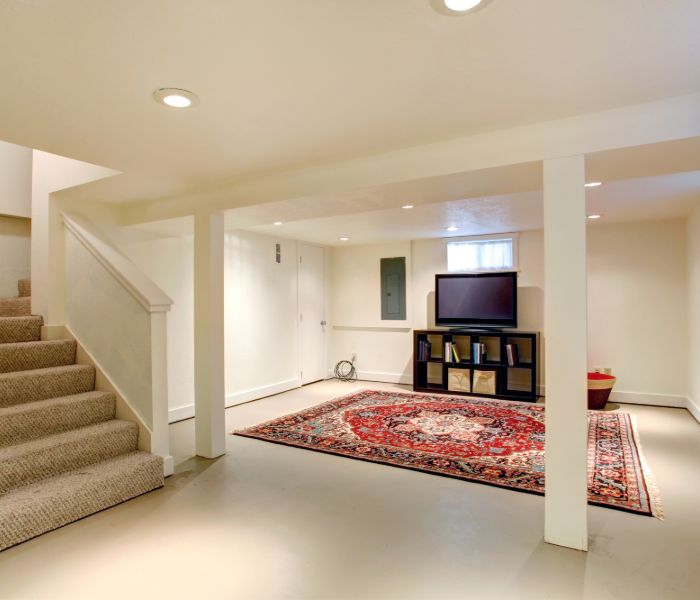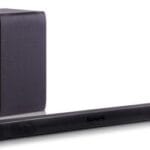Have you ever walked into your basement expecting a cool escape from the summer heat, only to be met by an unexpected wave of warmth? You’re not alone.
Many homeowners find themselves puzzled by why their basements, typically known for being cool and damp, suddenly feel like a cozy living room. But don’t worry, there’s a reason behind this surprising heatwave. Understanding why your basement is warm can help you tackle the issue head-on, ensuring a comfortable and energy-efficient home.
We’ll delve into the common causes of a warm basement and share practical solutions that will have you reclaiming your cool retreat in no time. Keep reading to discover the secrets lurking beneath your floorboards and how you can take control of your basement’s temperature.
Insulation Issues
You’re wondering why your basement feels like a sauna in the summer and a cozy den in winter, and the culprit might be insulation issues. Insulation is crucial in regulating temperature and maintaining comfort levels. Without effective insulation, your basement could be susceptible to unwanted warmth.
Poor Insulation Quality
Imagine buying a winter coat, but it’s made of thin fabric that doesn’t keep you warm. That’s what poor insulation does to your basement. Insulation materials vary in quality and effectiveness. If the initial installation used subpar materials, your basement won’t retain the cool air from your air conditioning system.
Think about the insulation in your walls. Is it old and worn? Over time, insulation can degrade, losing its ability to insulate properly. This means heat can easily penetrate, making your basement warmer than desired.
Gaps And Leaks
Have you ever noticed small gaps in the corners or around the windows of your basement? These tiny openings might be the reason for the warmth. Gaps and leaks allow heat from outside to seep in, bypassing any insulation efforts.
Check around pipes and vents. Even minor leaks can contribute to significant temperature changes. You might be surprised to find that sealing these gaps is a simple and effective solution to your problem.
Reflect on the last time you inspected your basement. Did you overlook these areas? Regularly checking for and sealing gaps can make a huge difference in maintaining a cooler basement. Have you considered a professional assessment to identify these hidden leaks?
Addressing insulation issues is not only about comfort but also about energy efficiency. What steps can you take today to improve your basement’s insulation? Your wallet and your comfort will thank you.

Credit: www.instagram.com
Appliance Heat
Ever walked into your basement and wondered why it’s warmer than expected? The answer often lies in the heat generated by appliances. These essential household tools can significantly increase the temperature in your basement. Understanding how each appliance contributes to this warmth can help you manage the climate better.
Furnace Location
The placement of your furnace can greatly impact basement temperatures. Furnaces generate a considerable amount of heat as they operate. If your furnace is located in the basement, it can lead to higher temperatures in that area. Have you ever noticed how the basement warms up during winter, even when the rest of the house feels chilly?
Consider if your furnace is in an enclosed space or open area. Enclosed spaces can trap heat, making the basement even warmer. You might want to think about insulating the room or improving ventilation to regulate the temperature.
Water Heater Impact
Water heaters are another source of heat you might overlook. These appliances consistently produce heat, especially if they’re older models. If your water heater is housed in the basement, it adds to the overall warmth.
Have you checked the age and efficiency of your water heater? Older models tend to be less efficient and produce more heat. Upgrading to a more efficient model can reduce the heat output significantly. Or, you might want to add insulation around your water heater to minimize heat loss.
Managing appliance heat is crucial to maintaining a comfortable basement environment. What adjustments could you make to balance the temperature in your home? Share your thoughts or experiences in the comments below!
Ventilation Problems
Basements often feel warmer due to poor airflow and lack of ventilation. Warm air from upper floors can get trapped. This can create an uncomfortable atmosphere.
Your basement feels unusually warm, and you might be wondering why. Ventilation problems could be the hidden culprit behind this discomfort. Proper air circulation is crucial in maintaining a balanced temperature, but various issues can disrupt this harmony. Let’s dive into some common ventilation problems that might be heating up your basement.
Blocked Vents
Blocked vents are often a silent offender. Dust, debris, or even furniture can obstruct airflow, causing warm air to stagnate. Imagine the vents in your basement as the lungs of your home. If they’re blocked, your basement can’t breathe properly, leading to an increase in temperature. Regularly check for any obstructions and clear them to ensure optimal airflow. Sometimes, the problem lies with vents that are unintentionally sealed off during remodeling. Did you recently move furniture around? Check if a couch or cabinet is inadvertently blocking a vent. Small changes in arrangement can make a big difference.
Improper Airflow
Improper airflow can also contribute to your basement feeling like a sauna. If your HVAC system isn’t distributing air evenly, some areas might get warmer while others stay cooler. Have you noticed one corner of the basement is cooler than the rest? This uneven distribution might be your clue. Ensure that your system is well-maintained and check for any irregularities in how air is flowing through the space. Regular cleaning and maintenance of your HVAC system can prevent these issues. Consider installing fans or vents to help circulate the air better. These small adjustments can create a more balanced temperature environment. Have you ever stood in the path of a fan and felt instant relief? That’s the magic of proper airflow. Why let your basement stay uncomfortably warm when simple fixes could bring back the chill? Understanding and addressing these ventilation problems can transform your space from a heat trap to a cozy retreat.

Credit: annarborfoundationrepairexperts.com
Environmental Factors
Understanding why your basement feels unusually warm can be puzzling. Environmental factors play a significant role. They can influence temperature changes in your basement. Knowing these factors can help you manage your home’s climate better.
Sunlight Exposure
Sunlight exposure can heat your basement. If your home is south-facing, it receives direct sunlight. This sunlight warms up the walls and floors. Basements with windows or glass doors get more sun. Even if they are small, they can trap heat. This can make the area warmer than expected.
Soil Temperature
Soil temperature affects your basement’s warmth. During summer, the soil warms up. This heat transfers to your basement walls. They act like a giant heat sponge. In areas with warmer climates, soil retains more heat. This can lead to a consistently warm basement. It’s a subtle but powerful factor.
Humidity Levels
A warm basement often indicates high humidity. Excess moisture in the air raises the temperature. Humidity makes basements uncomfortable. It can also lead to mold growth. Understanding humidity levels is crucial for a comfortable basement.
Moisture Retention
Basements are prone to moisture retention. They are below ground level. This makes them susceptible to water seepage. Groundwater can infiltrate through walls and floors. Poor ventilation traps this moisture inside. This creates a humid environment. Humidity keeps the basement warmer than desired.
Dehumidifier Usage
Using a dehumidifier can help. It reduces moisture levels in the basement. Dehumidifiers pull excess water from the air. This lowers humidity levels effectively. A less humid basement feels cooler. It also prevents mold and mildew. Regular use maintains a comfortable atmosphere.
Structural Design
Warm air in a basement often results from poor insulation and lack of ventilation. Heat from appliances or sunlight can also contribute. Proper structural design can help maintain a comfortable temperature.
When you step into your basement, expecting a cool retreat from the summer heat, it can be perplexing to find it unusually warm. The structural design of your basement plays a significant role in temperature regulation. Understanding these design elements can provide insights into why your basement feels more like a sauna than a sanctuary.
Basement Layout
The layout of your basement might be a key factor in its warmth. Basements with open layouts can allow heat to circulate more freely. This is especially true if there are fewer walls to block airflow. Think about basements with multiple rooms versus a single large space. Multiple rooms can trap heat in smaller areas, while a single space can let it spread, impacting overall warmth. Consider how your basement is used. If it’s packed with furniture or other items, airflow is restricted, causing warmer temperatures. Reflect on the layout and usage to identify potential heat traps.
Building Materials
The materials used in building your basement can also contribute to its warmth. Concrete, a common basement material, can retain heat. This is particularly noticeable during hotter months. Insulation quality is another consideration. If your basement is poorly insulated, it may absorb heat from surrounding soil. This can lead to a warmer indoor environment. Examine windows and doors, too. If they aren’t sealed properly, they might let warm air in, affecting your basement’s temperature. Look for drafts around these areas to see if they’re part of the problem. A warm basement might be a surprise, but understanding its structural design can offer solutions. Have you checked your basement layout or the materials used in its construction recently?
Utility Lines And Systems
Ever stepped into your basement and wondered why it feels unusually warm compared to the rest of your home? A significant factor could be the utility lines and systems running through it. These systems are essential for your home’s functionality, but they might be contributing to the heat. Let’s explore how hot water pipes and electrical systems could be the culprits.
Hot Water Pipes
Hot water pipes are often hidden behind walls or ceilings, but their presence can make a noticeable difference in temperature. If these pipes run through your basement, they could be radiating heat into the surrounding space. Even a small leak or insufficient insulation can amplify this effect.
Consider checking if your pipes are insulated properly. Insulation not only prevents heat loss in the water but also minimizes the heat emitted into your basement. Have you ever thought about the possibility of adding pipe insulation as a simple DIY project? It could be an effective way to manage heat.
Electrical Systems
Electrical systems, including transformers and panels, can also generate heat. Have you ever noticed the warmth around electrical panels? The energy flowing through these systems can raise the temperature in confined spaces like basements.
Ensure your electrical system is well-maintained. Poor wiring or overloaded circuits can exacerbate the heat issue and pose safety risks. Regular check-ups by a professional can help you identify problems early.
Ultimately, understanding how utility lines and systems influence your basement’s temperature can guide you in making your home more comfortable. Could a few small changes keep your basement from feeling like a sauna? Consider these insights and take action to balance the warmth in your home.

Credit: www.drenergysaver.com
Frequently Asked Questions
Why Is My Basement Warmer Than My House?
Basements can trap heat due to insulation, lack of ventilation, and appliances. They often retain warmth from the ground.
Can Poor Ventilation Make My Basement Warm?
Yes, poor ventilation can increase warmth. Stale air cannot escape, causing heat to build up over time.
Do Basement Heaters Cause High Temperatures?
Yes, heaters can raise basement temperatures significantly. They heat the space, sometimes more than intended.
Could Insulation Be A Reason For A Warm Basement?
Absolutely. Insulation keeps heat inside. If too much, it can make your basement warmer than desired.
Is Basement Humidity Linked To Warmth?
Yes, humidity can make basements feel warmer. Moisture in the air retains heat, affecting the temperature.
Conclusion
Identifying why your basement is warm can solve discomfort issues. Check insulation and ventilation first. These factors often impact temperature. Consider humidity levels too. Moisture can make a space feel warmer. Explore heating systems and their efficiency. Sometimes, they heat unintentionally.
Ensure appliances don’t generate extra heat. Simple adjustments can make a big difference. A cooler basement improves overall home comfort. Regular inspections help maintain optimal conditions. Addressing warmth issues leads to a more pleasant living space. A balanced environment enhances daily life.
Stay proactive in managing your basement’s climate.




